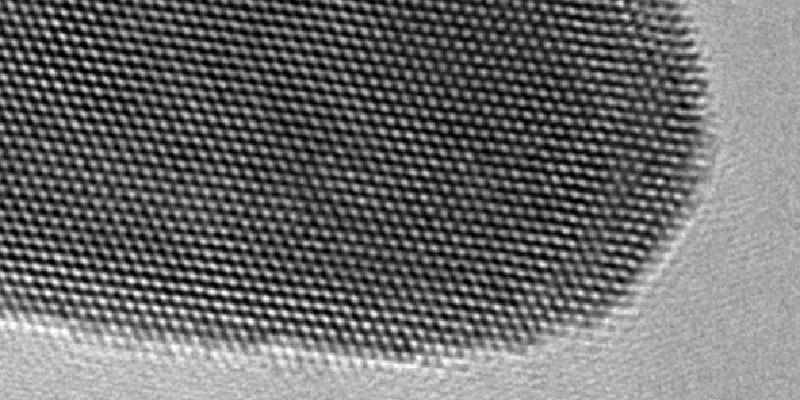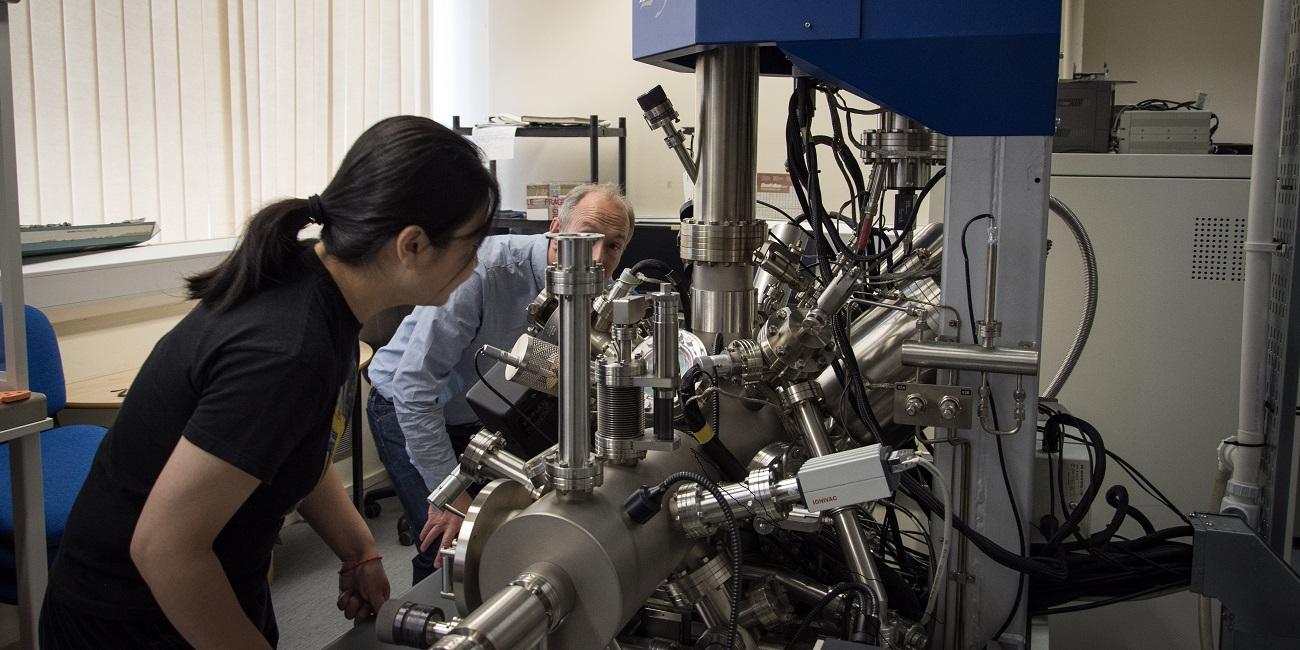Scientists at the University of Leeds have created a new form of gold which is just two atoms thick – the thinnest unsupported gold ever created.
The researchers measured the thickness of the gold to be 0.47 nanometres – one million times thinner than a human finger nail – and imaged it using an electron microscope, demonstrating the material’s lattice structure.
The material could have wide-scale applications in the medical device and electronics industries, and also as a catalyst to speed up chemical reactions in a range of industrial processes.
Laboratory tests show that the ultra-thin gold is 10 times more efficient as a catalytic substrate than the larger gold nanoparticles currently used in industry. Scientists believe the new material could also form the basis of artificial enzymes for potential use in rapid, point-of-care medical diagnostic tests and in water purification systems.
Innovative nanomaterial manufacture
Dr Sunjie Ye, from Leeds’ Molecular and Nanoscale Physics Group and the Leeds Institute of Medical Research and lead author of a paper in Advanced Science, said:
“This work amounts to a landmark achievement.
“Not only does it open up the possibility that gold can be used more efficiently in existing technologies, it is providing a route which would allow material scientists to develop other 2D metals.
“This method could innovate nanomaterial manufacturing.”
Synthesising the gold nanosheet takes place in an aqueous solution and starts with chloroauric acid, an inorganic substance that contains gold. It is reduced to its metallic form in the presence of a “confinement agent” – a chemical that encourages the gold to form as a sheet just two atoms thick.
Because of the gold’s nanoscale dimensions, it appears green in water, and given its frond-like shape, the researchers describe it as gold nanoseaweed.
Images taken from an electron microscope reveal the way the gold atoms have formed into a highly organised lattice structure.

2D gold imaged with an electron microscope
Professor Stephen Evans heads the Leeds’ Molecular and Nanoscale Research Group and supervised the research. He said the considerable gains that could be achieved from using ultra-thin gold sheets were down to their high surface-area-to-volume ratio.
“Gold is a highly effective catalyst. Because the nanosheets are so thin, just about every gold atom plays a part in the catalysis. It means the process is highly efficient.
“Our data suggests that industry could get the same effect from using a smaller amount of gold, and this has economic advantages when you are talking about a precious metal.”
The flakes are also flexible, meaning they could form the basis of electronic components for bendable screens, electronic inks and transparent conducting displays.
For more on the discovery of unsupported 2D gold, read the story at the University of Leeds site.



